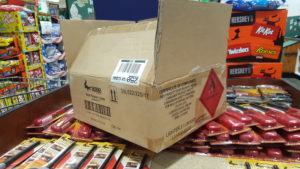In an earlier article I explained that a shipping paper may be used for shipments of both hazardous and non-hazardous materials. I also identified the different forms a shipping paper may take, such as: uniform hazardous waste manifest, bill of lading, and others. Though it may appear in many forms, if used for the transportation of a hazardous material (HazMat) all shipping papers must contain a hazardous materials description. The Hazardous Materials Regulations (HMR) of the Pipeline and Hazardous Materials Safety Administration within the U.S. Department of Transportation (USDOT/PHMSA) mandate the information that must be included in the hazardous materials description. These regulations can be found in the HMR at 49 CFR 172.202. A hazardous materials description must include the following:
- The identification number shown in column 4 of the Hazardous Materials Table.
- The proper shipping name shown in column 2 of the Hazardous Materials Table.
- The hazard class or division number.
- The Packing Group.
- Unless transported by air, the total quantity of HazMat by mass or volume. There are other requirements for transportation by air explained further at §172.202(a)(6).
- The number and type of packages.
Like this article? Subscribe to my Monthly Newsletter No marketing emails! |
§172.203 identifies additional description requirements that must be included as part of the hazardous materials description, if applicable:
- Special Permits.
- Limited Quantities.
- Hazardous Substances.
- Radioactive Material.
- Empty Packagings.
- Transportation by Air.
- Transportation by Rail.
- Transportation by Highway (applicable to anhydrous ammonia and liquefied petroleum gas only).
- Transportation by Water.
- Technical Names for “n.o.s.” and Other Generic Descriptions.
- Marine Pollutants.
- Poisonous Materials.
- Elevated Temperature Materials.
- Organic Peroxides and Self-Reactive Materials.
- Liquefied Petroleum Gas (LPG).
 You may include additional information about the hazardous material on the shipping paper provided it is consistent with the required description. You must take care not to include so much additional information that the purpose of the shipping paper: the communication of the potential hazards of the material, are lost.
You may include additional information about the hazardous material on the shipping paper provided it is consistent with the required description. You must take care not to include so much additional information that the purpose of the shipping paper: the communication of the potential hazards of the material, are lost.
§172, Subpart C also identifies other information that must be included on a shipping paper:
- Emergency response telephone number [§172.201(d)].
- The shipper’s certification (§172.204).
Contact me with any questions you may have about the transportation of hazardous materials by air, highway, vessel, or rail International and Domestic Daniels Training Services, Inc. 815.821.1550 |
The purpose of the hazardous materials description on a shipping paper is to inform anyone who comes in contact with the shipment of the potential hazards associated with it. The hazardous materials description does no good, however, if your HazMat Employees are not trained in the ways to interpret that information. My training gives your employees (and you) the tools and the knowledge to perform their jobs safely and in compliance with the regulations.
